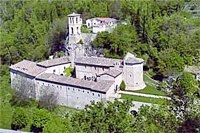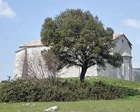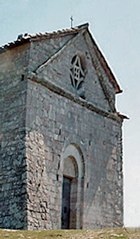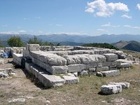

Eremità degli Arnolfi (1230)

The Blessed Pietro dal Poggio is said to have built the first Franciscan convent here in 1230. In 1291, Pope Nicholas IV granted indulgences to those visiting it.
The hermitage was among the four specified by Pope Clement VI in 1350, at the behest of Brother Gentile of Spoleto, “to observe inviolate ... the Rule [of St Francis] in that purity and primal simplicity in which he wrote it”. However, Pope Innocent VI revoked this concession in 1355, when Gentile da Spoleto was accused of heresy and imprisoned. The Blessed Paoluccio de' Trinci seems to have been here at that time, and he was now forced to return to Foligno.
Blessed Paoluccio de' Trinci established at San Bartolomeo di Brogliano in 1368, and it seems that a similar community was re-established at the Eremità at about this time. Pope Gregory XI approved the way of life of eleven hermitages, including those at Brogliano and at the Eremità, in 1373. The friars of this movement became known as "the brethren of the family of the observance" or the "Zoccolanti" (because they wore wooden clogs).
The friars were forced to leave the convent in 1867 and it fell into decay. Brother Bernardino Greco moved back here in 1991 and has organised the complete restoration of the complex.
For more detail, go to this page in “Medioevo in Umbria”.
Sant’ Erasmo (12th century)

The present church originally formed part of a Benedictine monastery. Its dedication to St Erasmus suggests that the site had previously been associated with the pagan cult of Castor and Pollux.
Pope Nicholas V gave the abbey in commendam to Angelo Geraldini of Amelia in ca. 1450. His father, Matteo Geraldini commissioned Giovanni Fiorentino to paint a series of frescoes here in his honour. (See the page on the Geraldini family).

Temples of Monte Torre Maggiore (3rd century BC)

Return to the home page on Cesi.

